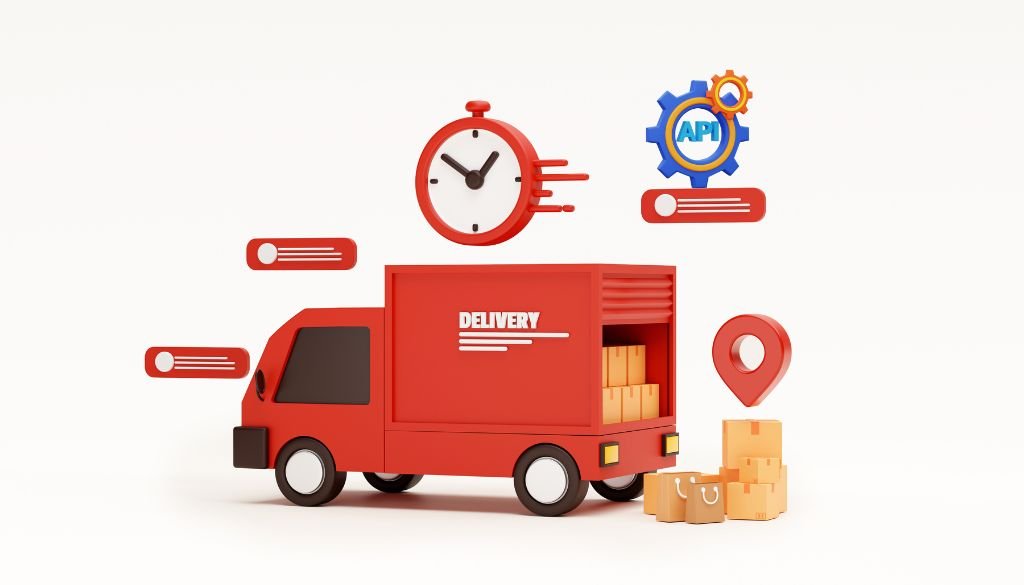In today’s fast-paced digital economy, efficient shipping and logistics are paramount for businesses to thrive. To streamline operations and enhance customer experiences, many companies are turning to shipping APIs. This article provides an in-depth look at what shipping APIs are, how they function and their benefits for businesses. Additionally, we’ll explore key considerations for selecting and implementing a shipping API.
Understanding Shipping APIs
A shipping API, or Application Programming Interface, is a set of protocols and tools that allow different software systems to communicate and exchange information related to shipping and logistics. Essentially, a shipping API enables businesses to integrate shipping functionality directly into their existing platforms, such as e-commerce websites, ERP systems, or inventory management software.
Functionality: Shipping APIs offer a wide range of functionalities, including rate calculation, label generation, tracking, and shipment scheduling. By leveraging these capabilities, businesses can automate and optimize their shipping processes, reducing manual effort and minimizing errors.
Integration: Integrating a shipping API involves connecting it to the business’s existing software infrastructure. This integration allows real-time data exchange, enabling seamless operations from order placement to delivery. Developers use API documentation provided by shipping carriers or third-party service providers to facilitate this integration.
READ MORE ARTICLE: COMPLIÂNCIA FUTURE OF BUSINESS STRATEGIES
Key Benefits of Shipping APIs
Implementing a shipping API can yield numerous benefits for businesses. Here are some of the most significant advantages:
Efficiency and Automation: One of the primary benefits of a shipping API is the ability to automate various aspects of the shipping process. This automation not only saves time but also reduces the risk of human error. For example, automatically generating shipping labels and calculating shipping costs in real time streamlines operations and ensures accuracy.
Cost Savings: By integrating a shipping API, businesses can access real-time shipping rates from multiple carriers, allowing them to choose the most cost-effective options. Additionally, automation reduces labor costs associated with manual data entry and order processing.
Enhanced Customer Experience: Shipping APIs enable businesses to provide customers with real-time tracking information and accurate delivery estimates. This transparency enhances customer satisfaction and trust, leading to repeat business and positive reviews.
Scalability: As businesses grow, their shipping needs become more complex. Shipping APIs offer scalability, allowing companies to handle increased order volumes and expand into new markets without significant additional overhead.
Core Features of a Shipping API
When evaluating shipping APIs, it’s important to understand the core features they offer. Here are some of the key functionalities to look for:
Rate Calculation: A shipping API can provide real-time rate calculations based on the package’s weight, dimensions, destination, and shipping method. This feature helps businesses offer accurate shipping costs to their customers at checkout.
Label Generation: Automatically generating shipping labels with the correct format and information for different carriers is a critical feature. This functionality ensures compliance with carrier requirements and speeds up the shipping process.
Tracking and Notifications: Real-time tracking capabilities allow businesses and customers to monitor the status of shipments from dispatch to delivery. Automated notifications keep customers informed about their order status, enhancing the overall experience.
Address Validation: An address validation feature ensures that shipping addresses are correct and complete, reducing the likelihood of delivery issues and returns. This validation can be performed at the point of entry during the checkout process.
Multi-Carrier Support: Support for multiple carriers gives businesses the flexibility to choose the best shipping options based on cost, speed, and reliability. This feature is particularly useful for companies with diverse shipping needs.
Implementing a Shipping API
Implementing a shipping API involves several steps, from selecting the right API to integrating it with existing systems. Here’s a high-level overview of the implementation process:
Choosing the Right API: The first step is to evaluate different shipping APIs based on the specific needs of your business. Consider factors such as functionality, carrier support, ease of integration, and cost. Many shipping carriers offer their APIs, and some third-party providers aggregate multiple carriers into a single API.
Integration: Once you’ve selected an API, the next step is integration. This process involves working with your development team or a third-party integrator to connect the API to your existing systems. Most APIs come with comprehensive documentation and support to facilitate this process.
Testing: Before going live, thoroughly test the integration to ensure that all functionalities are working correctly. This testing should include rate calculations, label generation, tracking, and address validation.
Deployment and Monitoring: After successful testing, deploy the API to your live environment. Continuously monitor its performance and address any issues promptly to ensure smooth operations.
The Future of Shipping APIs
The role of shipping APIs is expected to grow as businesses continue to seek ways to optimize their logistics operations. Future advancements in shipping APIs may include enhanced AI-driven route optimization, more sophisticated real-time tracking capabilities, and greater integration with emerging technologies such as blockchain for secure and transparent transactions.
AI and Machine Learning: AI and machine learning are poised to revolutionize the logistics industry. Shipping APIs that incorporate these technologies can offer predictive analytics for demand forecasting, intelligent route planning, and personalized shipping options based on customer behavior.
Blockchain Technology: Blockchain can enhance the transparency and security of shipping transactions. Future shipping APIs might leverage blockchain to provide immutable records of shipment details, reducing fraud and improving traceability.
Integration with IoT: The Internet of Things (IoT) can provide real-time data on the condition and location of shipments. Shipping APIs that integrate with IoT devices can offer enhanced visibility and control over the shipping process, ensuring timely and secure deliveries.
Conclusion
Shipping APIs are a powerful tool for businesses looking to streamline their shipping operations, reduce costs, and enhance customer satisfaction. By understanding the functionalities, benefits, and implementation process of shipping APIs, businesses can make informed decisions and leverage these tools to achieve their logistics goals. As technology continues to evolve, shipping APIs will play an increasingly critical role in the efficient and effective management of shipping and logistics.
For more insightful articles, please visit globalexpressinfo.com






